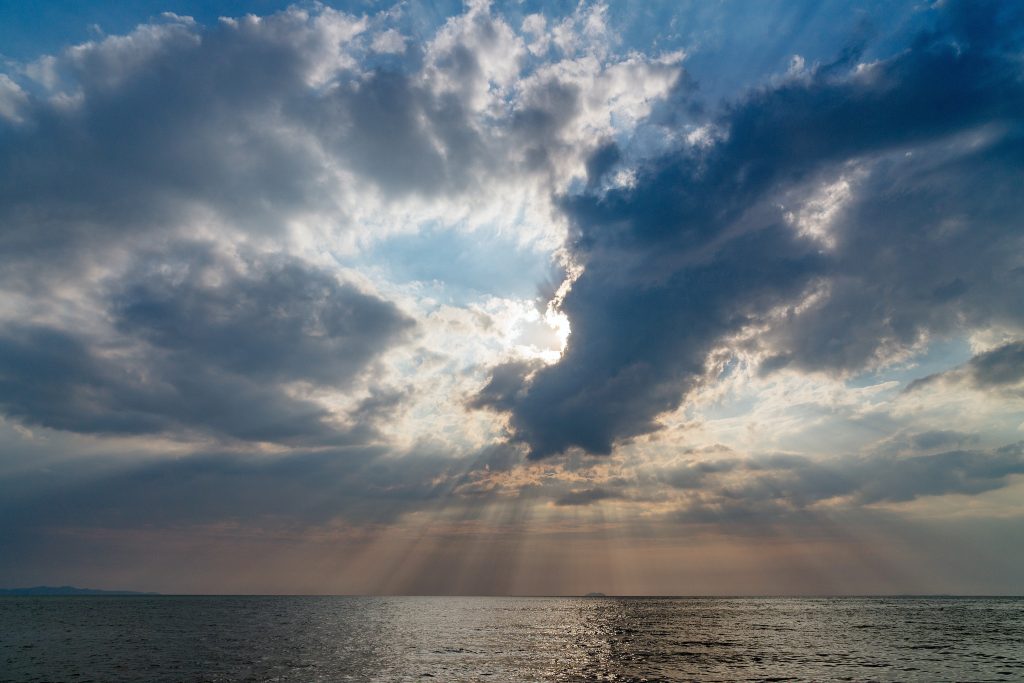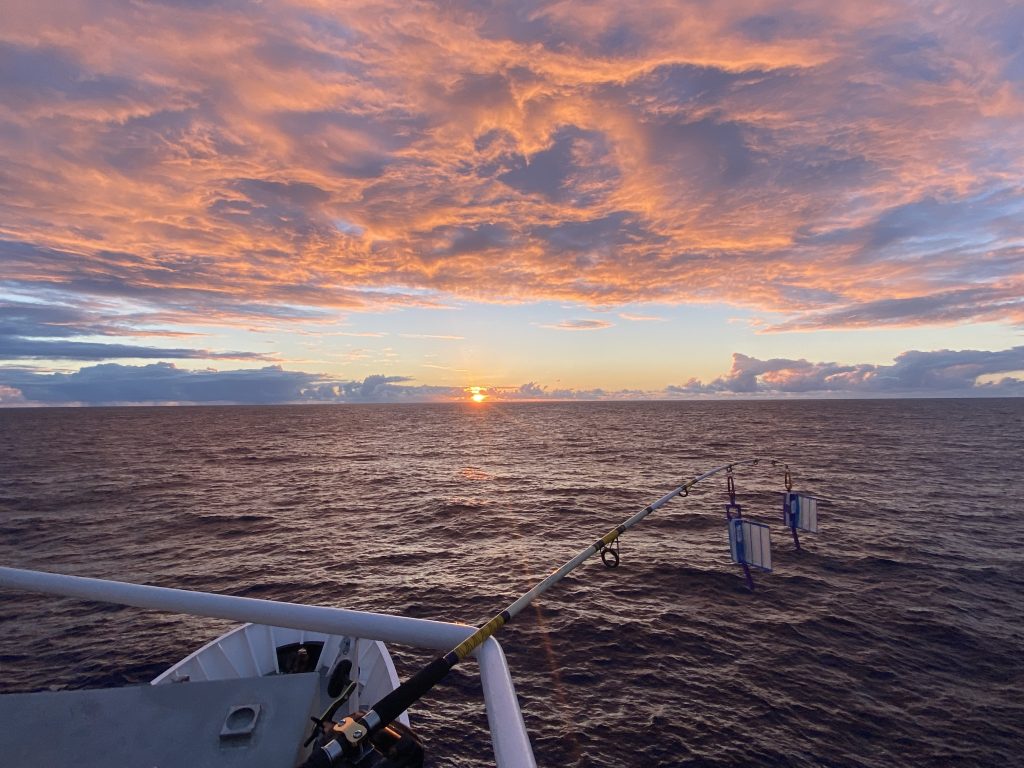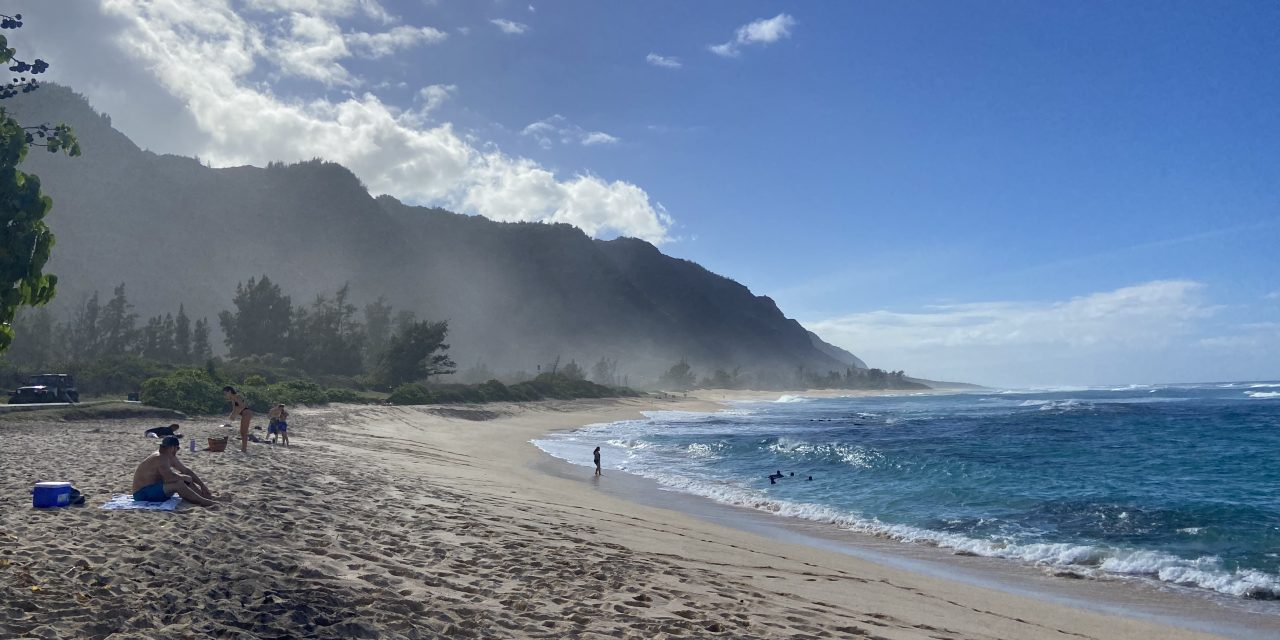Dust, ash, and other aerosolized particles have an enormous impact on weather and climate. A November 2023 study conducted by University of Hawaiʻi at Mānoa (UH; Honolulu) researchers explores the extent of these impacts, suggesting that clouds over Hawaii’s coastal regions contain up to five times the concentration of aerosolized sea salt as those over the open ocean.
This is significant as sea salt and other aerosols — particularly those in which particles are wider than 1 µm — directly affect the formation of rainfall, making them crucial determinants for Hawaii’s weather patterns. The team’s study, published in the journal Atmospheric Chemistry and Physics, focuses on these “giant” sea salt aerosols with the greatest effects on local precipitation.
“Aerosol-cloud interactions and rainfall are among the biggest uncertainties in projections of future climate,” said Katherine Ackerman, lead study author and UH atmospheric sciences doctoral candidate, in a release. “Because freshwater is essential to the sustainability of life on the Hawaiian Islands, it is imperative to accurately predict where and how much it will rain as our climate changes.”
Mini-Giant Nucleus Impactor Finds New Data
Alison Nugent, UH Associate Professor of Atmospheric Sciences and senior author of the study, worked alongside her team to create a cost-effective, lightweight, and 3D-printed device known as a mini-Giant Nucleus Impactor (mini-GNI). Unlike other sampling tools that only focus on bulk aerosol concentration or mass, the mini-GNI is capable of measuring aerosol size distributions, better capturing the extent of giant sea salt particles.

To gather data on the variations in sea salt size distributions at different altitudes, as well as at different locations along the coastline and in the open sea, the team attached the device to kites, fishing rods, and drones.
“Regular, in situ observation of clouds is difficult because of the effort involved with reaching them,” said Nugent. “So instead, much of our current research has focused on the giant sea salt particles that Hawaii’s clouds form on, and understanding the specific mechanisms that influence how these particles are produced, and where they are able to travel after production.”
Influence on Coastal Clouds
At various altitudes along the coastlines of Oahu, mini-GNI data detected significantly higher concentrations of giant sea salt aerosols than concentrations identified from offshore ships.
This discovery has the potential to enhance the accuracy of weather forecasting for cloud formation and rainfall patterns in the Hawaiian Islands, the researchers write. As waves crash onto the shore, they generate a mist consisting of water droplets and giant sea salt aerosols. Winds blowing from the sea then carry these particles toward the mountains, which then drift upward into the atmosphere where they become entrained in clouds.

“Anyone who goes to the beach in Hawaii has probably seen these processes in action,” said Ackerman. “Even when you can’t see them anymore, the particles are still there, moving with the wind, and eventually up to the clouds.”
Due to their considerable size, these particles tend to drop from the atmosphere at a much faster rate compared to other types of aerosols. Therefore, identifying sites where they are more densely concentrated will help accurately assess their potential effects on the local atmosphere.
The scientists additionally discovered that the wave height was the main factor in determining the levels of giant sea salt particles in the air.
“This observation feels intuitive—larger waves breaking along the shore will produce more ocean mist,” said Ackerman. “However, most computer models have been using wind speeds to predict sea salt aerosol concentrations over the open ocean, and almost none recognize coastlines as an additional source.”
Read the full study, “Mechanisms Controlling Giant Sea Salt Aerosol Size Distributions Along a Tropical Orographic Coastline,” in the journal Atmospheric Chemistry and Physics.
Top image courtesy of Katherine Ackerman

ABOUT THE AUTHOR
Michelle Kuester is a staff member of the Water Environment Federation, where she serves as Associate Editor of Stormwater Report and Water Environment & Technology magazine. She can be reached at mkuester@wef.org.





